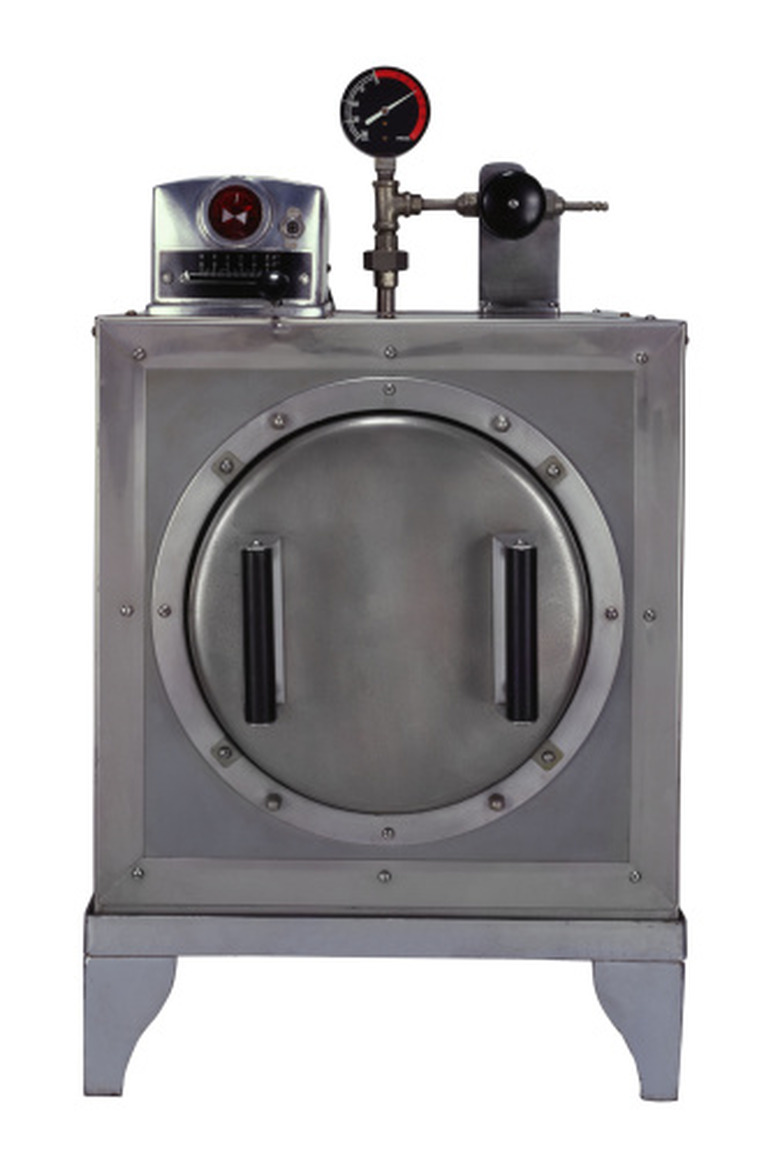What Are The Proper Conditions For The Autoclave?
Autoclaves are laboratory machines that heat their contents under heightened pressure conditions. Like a modern oven, they can be preset with regard to temperature and heating time. There is an additional control for pressure. The primary use of autoclaves is to sterilize equipment and other laboratory items such as reagents.
Preparing the Autoclave for Use
Preparing the Autoclave for Use
To prepare the autoclave for use, pour 1 gallon, or approximately 4 liters, of water into the bottom of the autoclave. There is usually a marking or protrusion to indicate where that volume ends. Next, load the equipment into the autoclave, and close the door. Be sure to follow the proper protocols for equipment loading and position as well as autoclave exhaust type, all of which depend on the kind of equipment being placed in the autoclave. Similarly, be sure to follow all safety protocols for removing the equipment after the autoclave cycle has run.
Temperature
Temperature
The standard temperature for an autoclave is 121 degrees Celsius. To get an idea of how hot this is, consider that corresponds to approximately 250 degrees Fahrenheit. In other words, it is hotter than boiling water. The reason for this is that simply bringing something up to the temperature of boiling water, 100 degrees Celsius (212 degrees Fahrenheit), is not sufficient to sterilize it because bacterial spores can survive this temperature. In contrast, 121 degrees Celsius is almost always sufficient for sterilization.
Pressure
Pressure
Sometimes liquids need to be sterilized. Most biological liquids and laboratory reagents are primarily water. Since water boils at 100 degrees Celsius at standard pressure, it would not be possible to heat it to any temperature higher than that under standard pressure conditions. As a result, it is necessary to increase the surrounding pressure to 1 atmosphere, or 15 pounds per square inch, above normal pressure in order to increase the effective boiling point of water to 121 degrees Celsius (boiling point varies directly with pressure).
Time
Time
The amount of time needed to achieve sterilization depends on how much equipment is in the autoclave to be sterilized. For small batches of equipment and reagents, i.e. where no container has more than 1 liter of liquid in it, the standard time is 15 minutes. For medium batches, i.e. containers with between 1 liter and 1 gallon of liquid, the time should be increased to 30 minutes. For large batches, i.e. containers with more than 1 gallon of liquid, the time used should be one hour.
Cite This Article
MLA
Tutor, Sly. "What Are The Proper Conditions For The Autoclave?" sciencing.com, https://www.sciencing.com/proper-conditions-autoclave-8204619/. 24 April 2017.
APA
Tutor, Sly. (2017, April 24). What Are The Proper Conditions For The Autoclave?. sciencing.com. Retrieved from https://www.sciencing.com/proper-conditions-autoclave-8204619/
Chicago
Tutor, Sly. What Are The Proper Conditions For The Autoclave? last modified March 24, 2022. https://www.sciencing.com/proper-conditions-autoclave-8204619/
